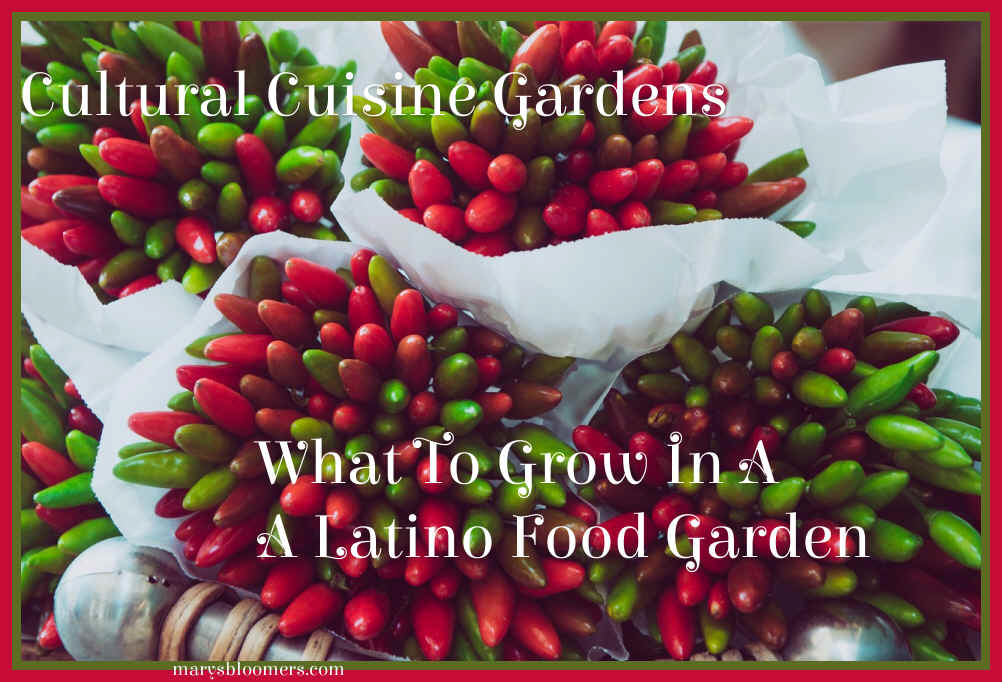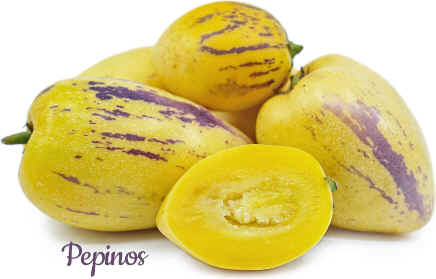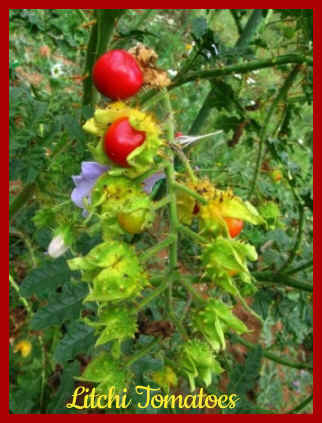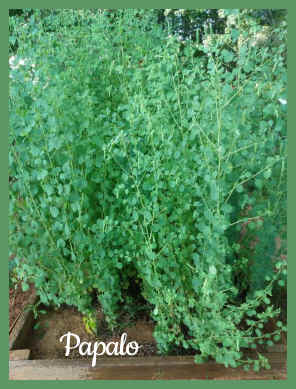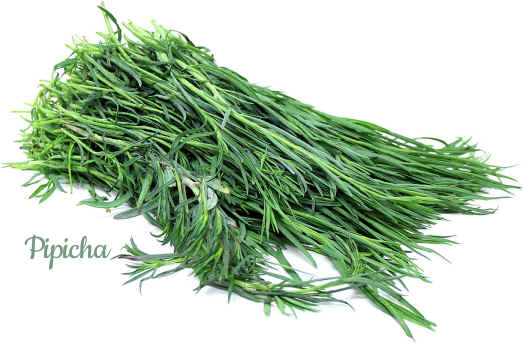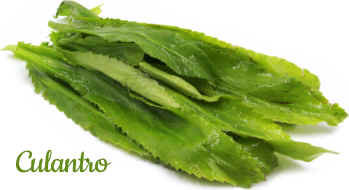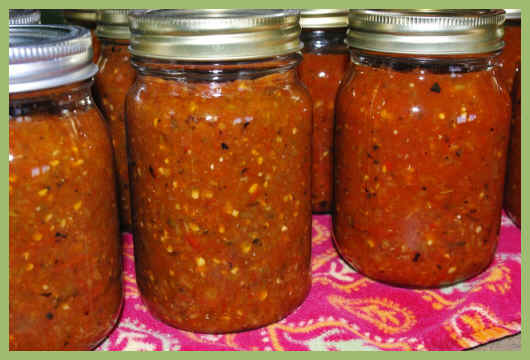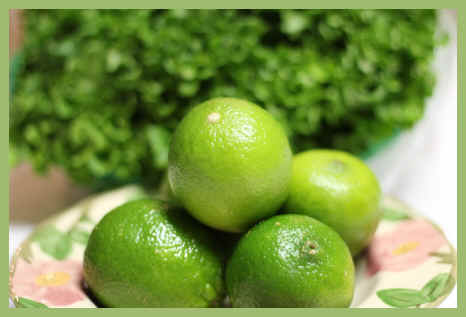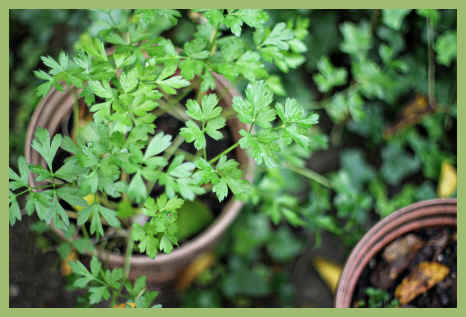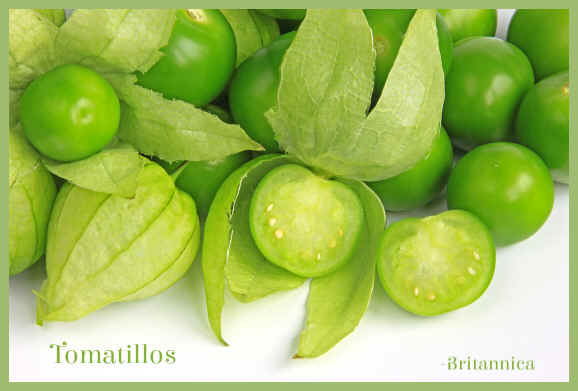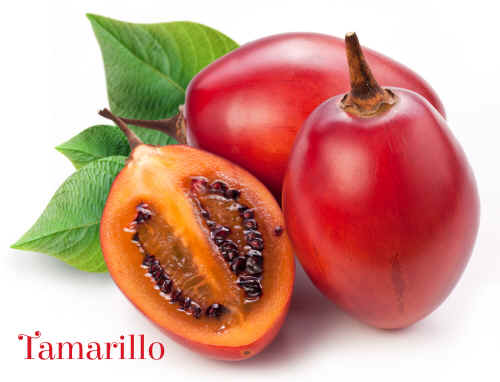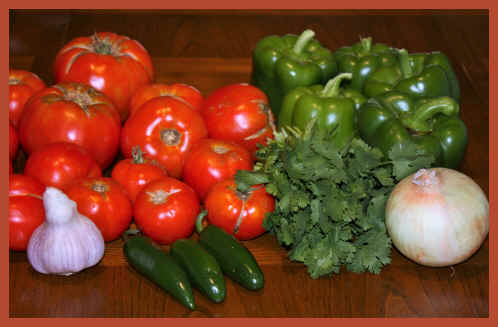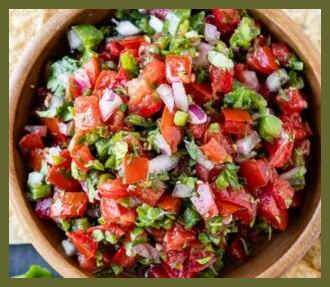|
|
|
This type of edible landscaping is functional and very colorful and attractive. Visit The Ornamental Mexican Hacienda designs for patio, courtyard or terrace gardens, Latino-style. The ideal shape for the garden is a square or rectangle, which will allow you to easily move through the garden while harvesting. The size of your garden can vary, but an 8 x 12 foot space is a nice size. As with every food garden, the planning process begins in winter and spring, with late summer into early fall being the best time to prepare the area for spring planting. Mark the boundaries of your Latino garden in an area that gets full sun, and remove all grass, weeds and rocks. Dig your paths down a few inches and mound the dug up dirt on top of the planting areas to create raised beds. Use brick or paving stones to line the pathways, outer frame of the garden, and the center Amend the soil of your garden with lots of compost or other organic matter, and then mulch the beds with organic mulch. HerbsChoose herbs and other plants essential to Latin cuisine. Not all of them have to be herbs. Include some tomatoes, or tomatillos and maybe Serrano pepper or jalapeno plants. You have to have garlic and onion, which can be tucked in among the other plants wherever they fit. A potted lime tree in the center as your focal point and ornamental specimen in the garden. "Must have” Latino herb plants. They look awesome in clay pots in and around the borders of the garden.
If you are not a big fan of cilantro, plant some flat leaf parsley for a milder flavor. Cilantro, or coriander, tends to bolt when temps get hot, so you can move the herb out of the hot sun, promoting leaf, not seed, production. Thyme [18] and marjoram [19] should also be included in the Mexican herb theme garden. Along with Mexican oregano, these three become the Latin bouquet garni, the backbone of Latino cooking. Beyond these more obvious options, when growing Mexican herbs, there are many lesser-known ingredients valuable to the cuisine. Annatto seed - used to flavor meats and color rice dishes, and Pipicha is a stronger version of cilantro and is found in green salsas and corn dishes.Hoja Santa - With their licorice/fennel flavor, Hoja Santa leaves are used to wrap food, much like tortillas. Epazote herb is another rampant grower that needs to be confined to a pot. Lipia - used in many Latino desserts and beverages. Also known as lemon verbena, the leaves of this herb can replace lemon zest in most recipes. Basil - Sweet basil is listed as an ingredient in several Latino recipes.
Caring for Your Latino Food GardenWater the garden moderately, but keep an eye on it during dry spells. Feed the tomatoes, peppers and basil with an organic fertilizer. Avoid overdoing it on the nitrogen, since too much can reduce fruiting. Root vegetables Yacon (Smallanthus sonchifolius)
Yam bean (Pachyrhizus erosus)These are tuberous roots
The harvesting of ripe fruit and
vegetables is usually done in mid to late August. Pepino (Solanum muricatum)The Pepino has a light-yellow to light-green skin, streaked with purple vertical striping. The flesh, when ripe is golden yellow with a narrow seed cavity. The Pepino is entirely edible: skin, flesh, pulp and seeds. The yellow interior is fine-grained and sweetly aromatic, intensifying as it ripens. Its flavor can be described as a mix of banana and pear, with a slightly bitter bite. Its size is inconsistent and can be as small as a plum or as large as a papaya. For optimum sweetness, Pepino should be picked at peak of ripeness. Care must be taken when handling Pepino fruits as once ripe they are delicate and easily bruised. The skin of the Pepino is edible but if tough and unpalatable it can easily be peeled away. Ripen at room temperature. Pair with lemons or limes, sweet basil, honey, chilis, chayote and coconut. Serve in fresh salads and sauces. Halve and serve fresh as a dessert or breakfast dish. Store ripe Pepino in a plastic bag in the refrigerator up to three days.
Sticky nightshade or litchi tomato (Solanum sisymbriifolium) Some people call it a wild tomato, others say it’s naturalized or an escaped crop. Some refer to it as an heirloom. Common names include Sticky Nightshade. It can be found not only in gardens, but in the wild around the world. A native of South America, it’s a hardy nightshade that reseeds itself. The husk, which is slightly bullet shape, folds back to reveal a bright red cherry-tomato like fruit. Interior flesh is yellow and seeds resemble cherry tomato seeds. Its texture is similar to a raspberry and the taste is tart like a sour cherry. They smell like fish. Use as you would tomatoes. A healthy plant will produce about a quart of fruit each. Some folks like to put them thought a sieve to remove the seeds. They respond well to some sweetness added when using in recipes, which then gives them a sweet and sour taste. Grow in pots because it will reseed and spread. Pipicha (Porophyllum linaria) and papalo (Porophyllum ruderale)
Cilantro:
Just like tomatillos, cilantro is relatively easy to take care of.
Plant in a pot with good soil in early spring or late summer/fall.
It’s better to grow from seeds because they don’t transplant well. Culantro
- (not cilantro)
Culantro is a leafy herb in the same family as parsley, celery and carrots. In the United States, it is often confused for the similarly spelled, cilantro, which also shares a similar aroma flavor profile, furthering the confusion. The two herbs are unrelated; botanically, Culantro is classified as Eryngium foetidum. In addition to being mislabeled as cilantro, the herb is sometimes called Saw-toothed mint and Long-leafed coriander or called “cilantro de hoja ancha,” meaning ‘wide-leaf cilantro’ in Spanish. Thanks to the increasing popularity of Puerto Rican, Caribbean and other Latin American cuisines Culantro is becoming more well-known outside of its native region.
Tomatoes:Tomatoes love full sun and warm weather. They tend to grow rather quickly so you should "cage" them. Dig your hole half a foot deeper than the original pot depth, and trim the bottom leaves from the plant before planting. Water generously once planted in the soil. Once established, tomatoes require consistent watering and adding mulch around the base of the plant can help retain the moisture in the soil. Be sure not to break the main stems when pulling off the fresh tomatoes. Some enjoy green tomatoes as is, or fried, but you can still ripen green tomatoes by letting them sit at room temperature on your countertop or table. NEVER refrigerate tomatoes. They lose all flavor and texture. Of course, you refrigerate the dishes you've made with them.Onions: Onions love full sun and rich, organic soil. Keep the planting hole shallow, and space each onion about a foot apart. Fertilize with nitrogen fertilizer every few weeks. They typically don’t need much water (around 1 inch per week) but the more water you give them, the sweeter they’ll be. Once the tops of the plants have browned, you can carefully pull them from the soil. Leave the onions on the ground for a few days for the plant to cure and then store in a chilly space. Peppers - Jalapenos,
serranos, bell papers, cayenne and banana peppers, all varieties can be
easily planted and grown in almost any backyard. Pick a sunny and
spacious area with proper drainage. Pick a place where no past
vegetation has grown (especially other peppers). Use a generous amount
of compost. Peppers prefer warmer temperatures so start your seedlings
inside and gradually introduce them to the climate and soil well into
the warm spring, after the last frost date for your area. Water
them enough to keep the soil slightly moist.
Limes:Dwarf Lime Trees - Grow dwarf lime trees in a pot on your patio or in the garden. The trees are dwarf, but the fruit is the same size as produced on large trees. Dwarf varieties a very ornamental, with glossy green leaves that smell great, and can be dried for Thai and other cuisines. Citrus trees are not hardy in the northern U.S. - Bring them in for the winter. They make a beautiful, non-fussy houseplant. Put them outside again in spring til fall. Water sparingly during the winter months as the plant sits dormant but in the summer, you’ll want to water them every day. Corn: Used in all kinds of Mexican dishes and you can easily grow a crop in your own backyard, if you have enough space. There are many different types of corn. Some are sweeter than others but for fresh corn salsa, the sweeter the better. Frost will kill corn, so start your seeds well after the last frost date. Ideally, the soil should be around 60 degrees and your plot should be in full sun. Corn is an aggressive feeder,
nitrogen fertilizer and compost should be a part of their diet. Water is
very important, and if your crop isn’t getting enough, your corn
won’t sprout kernels. Water corn at the base of the plant so that you
don't wash off any pollen. Once the corn silks show, wait a few weeks to
harvest. To test for ripeness, pull back the husk and pierce a kernel.
If it’s juicy, it’s ripe. If it’s hard or dry, it’s either
past the prime ripeness or still too early to pick.
Tomatillos:Green cousins of the tomato. You can buy mature plants or start your seeds inside about 3 months before the last frost of the season.Important note: Tomatillos need pollination from another tomatillo plant to bear fruit. You’ll need at least two plants to produce any ripe tomatillos. They love sun, rich soil with good drainage and a few feet of space in between each plant. They don’t do well in wet soil so be careful not to overwater. Once the plant bears ripe tomatillos, you can carefully pick it from the plant, and pull off the papery husk. Tomatillo, also called Mexican ground cherry or Mexican husk tomato, is an annual plant of the nightshade family, and its fruits are tart. The plant is native to Mexico and Central America, where it has been an important food crop for millennia. The fruits can be eaten raw, and are sometimes made into soups, jams, or chutneys . In Mexico and Guatemala, tomatillos and spicy peppers are commonly roasted and then ground together to form salsa verde, a green sauce used as a condiment on meats and other foods. Tomatillos are a good source of dietary fiber, vitamin C, vitamin K, and niacin. - Britannica Tamarillo: The plant is a fast-growing tree.. Peak production is reached after 4 years, and the life expectancy is about 12 years. The tree usually forms a single upright trunk with lateral branches. The flowers and fruits hang from the lateral branches. The leaves are large, simple and perennial, and have a strong pungent smell. The flowers are pink-white, and form clusters of 10 to 50 flowers. They produce 1 to 6 fruits per cluster. Plants can set fruit without cross-pollination. You'll need space for this tree, and it can be a centerpiece or focal point in the Latino garden. Prune to keep a manageable size. The tamarillo has been described as having a taste similar to that of a passion fruit and a piquant tomato combined. Dwarf tamarillo (Solanum abutiloides)
|
|
Recipe For One of My favorites: Pico De Gallo - Fresh Mexican Salsa
A classic Mexican tomato dip or sauce that is a also a healthy, low-calorie appetizer. Pico de gallo shares the same basic ingredients as traditional red salsa, but the preparation methods are different. Pronounced PEE-koh day GUY-yoh. You might also see it called salsa fresca (fresh sauce). Pico de gallo always uses raw, diced ingredients. It’s less wet, and it adds a wonderful chunky texture and substance to tacos and more. Salsa can call for roasted or stewed tomatoes, and is generally closer to a purée in texture. You will need only five ingredients (six if you count the salt): ripe red tomatoes, red onion, jalapeño, cilantro, lime and salt. Use ripe red tomatoes.Ripe tomatoes are key to making great pico de gallo. Roma and San Marzano tomatoes are a good choice since they are less watery, but use the most red, ripe tomato variety available. Core your tomatoes and remove the seeds before chopping. Use every last bit of the red tomato flesh. Don't leave much pulp, which will make your pico de gallo watery. In the winter, you can use cherry tomatoes, which tend to have good flavor year-round. Be prepared to chop them into small pieces, and perhaps give the finished product some extra time to marinate since cherry tomatoes tend to be more firm than most. Chop your ingredients very finely.Chop your tomato, onion, jalapeño and cilantro finely and you will be rewarded with more flavor in every bite. Let the onion, jalapeno, lime and salt marinate while you chop the tomatoes and cilantro.Let your pico rest for 15 minutes before serving.This step gives the flavors time to mingle and brings out their best. As the tomatoes and remaining ingredients rest, the salt draws the moisture out of the ingredients and condenses their flavor. If you won’t be serving the pico de gallo immediately, you can refrigerate it for several hours or even overnight. Serve with a slotted spoon. Tomatoes release a good amount of moisture, so you will see some tomato juice pool at the bottom of your bowl. The easiest solution here is to serve your pico de gallo with a slotted spoon or large serving fork. This way, you don’t transfer a ton of moisture with your pico. You can basically use pico de gallo like salsa. It’s a healthy and refreshing condiment on a lot of foods. Variations Remember, tomatoes are a fruit. You can simply replace the tomato with other fruits like mango, peaches, pineapple, strawberries, or sweet corn, and adjust to taste. Ingredients
Resources Britannica
|
||
|
If you love the vintage artwork, we offer several digital collections
Quick Links
Content, graphics and design ©2020 marysbloomers.com
|
